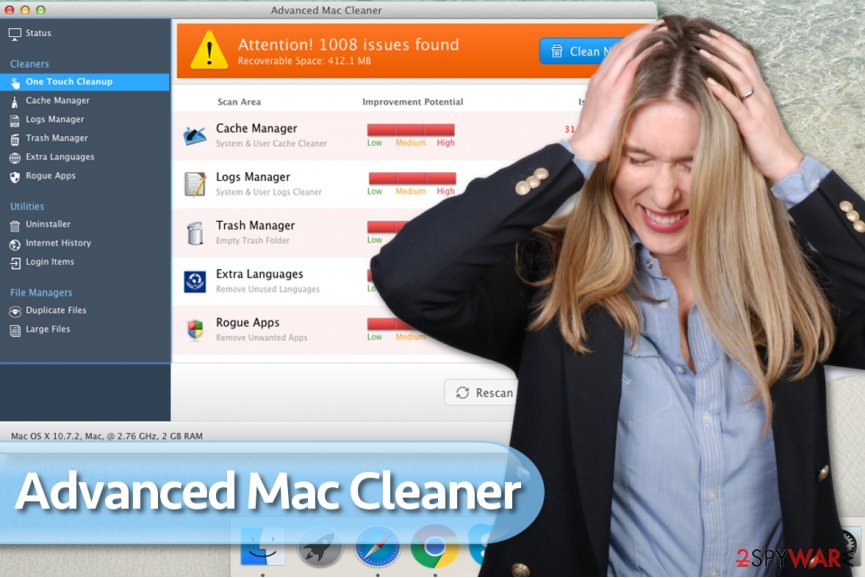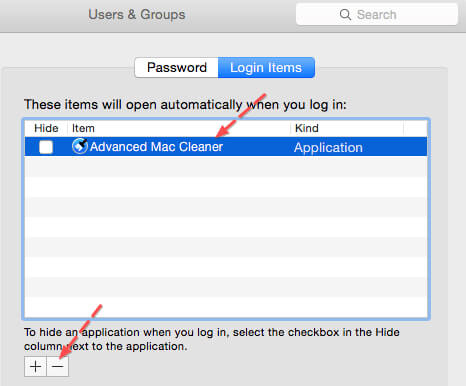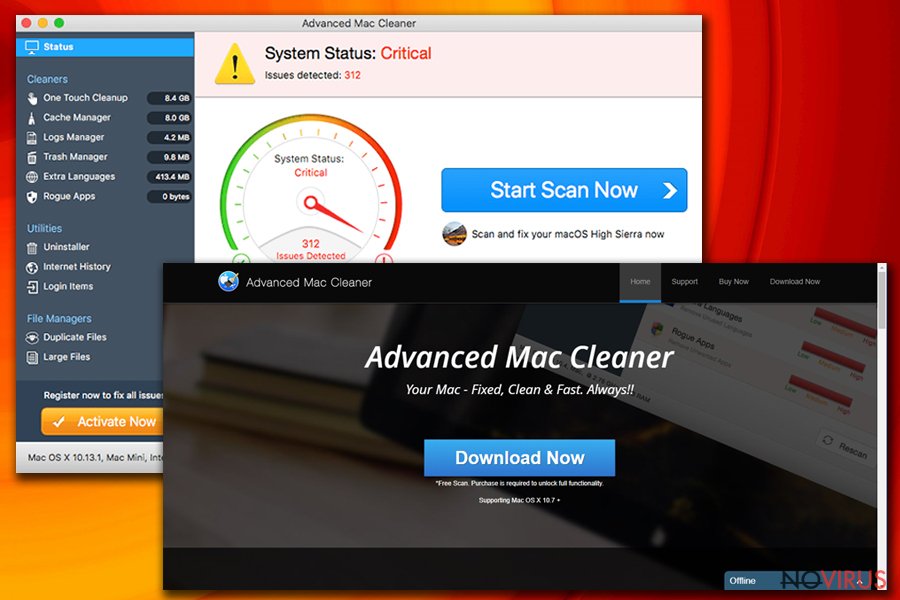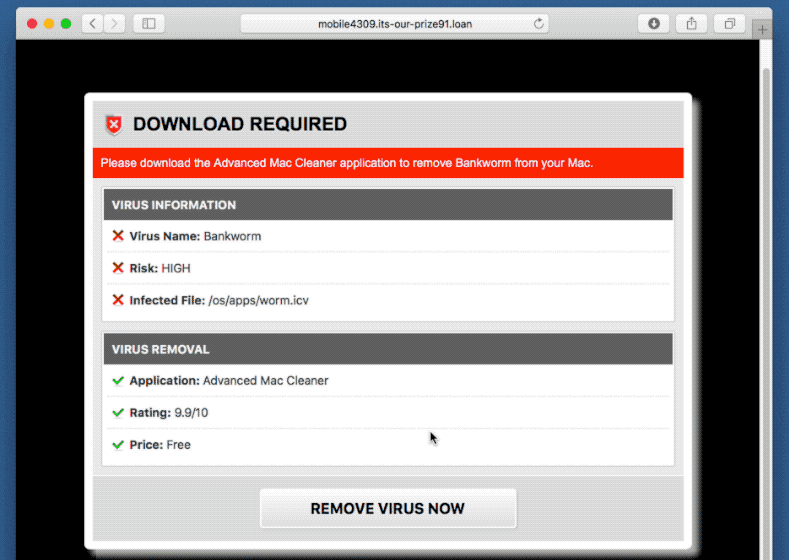
- #PROGRAM TO REMOVED ADVANCED MAC CLEANER HOW TO#
- #PROGRAM TO REMOVED ADVANCED MAC CLEANER WINDOWS 10#
- #PROGRAM TO REMOVED ADVANCED MAC CLEANER SOFTWARE#
#PROGRAM TO REMOVED ADVANCED MAC CLEANER SOFTWARE#
To completely remove everything from hard drive, cleaning software is a must. So people now removing all their personal information, privacy data from the hard drive and keeping them in more secure places. Most of the people now switching to cloud storage and the demand for hard drive reducing day by day, those days are gone when everything was stored in hard drive.
#PROGRAM TO REMOVED ADVANCED MAC CLEANER HOW TO#
There is also a query related to deleting data from a dead computer, for all those who have a similar question, please refer to How to wipe hard drive on a dead computer? Why use hard drive cleaning software? But if you have used some of the top nothch hard drive cleaning software then it becomes almost impossible to recover any traces. It is always recommended to go for paid software when it comes for privacy and security of your data as there is much-advanced software available that recover wiped data.
#PROGRAM TO REMOVED ADVANCED MAC CLEANER WINDOWS 10#
Sudo rm "/Users/$3/Library/Logs/hlprawc.Recommended: How to uninstall Windows 10 built-in apps?

Sudo rm "/Users/$3/Library/Logs/hlpradc.log" Sudo rm "/Users/$3/Library/Logs/helperamc.log" Sudo rm "/Users/$3/Library/Logs/Mac Adware Cleaner.log" Sudo rm "/Users/$3/Library/Logs/Mac Ads Cleaner.log" Sudo rm "/Users/$3/Library/Logs/Advanced Mac Cleaner.log" Sudo rm "/Users/$3/Library/Logs/Mac Adware Cleaner" Sudo rm "/Users/$3/Library/Preferences/" locate Library Log and delete Sudo rm "/Users/$3/Library/Preferences/." Sudo rm "/Users/$3/Library/Preferences/pcvark" Sudo rm "/Users/$3/Library/Preferences/Adwarecleaner" Sudo rm "/Users/$3/Library/Preferences/Adware" Sudo rm "/Users/$3/Library/Preferences/Mac Adware Cleaner" Sudo rm -R "/Users/$3/Library/Applications Support/adc/" locate the Library Preferences Sudo rm -R "/Users/$3/Library/Applications Support/amc/" Sudo rm -R "/Users/$3/Library/Applications Support/awc/" Sudo rm -R "/Users/$3/Library/Applications Support/Advanced Mac Cleaner/" Sudo rm -R "/Users/$3/Library/Applications Support/Mac File Opner/" Sudo rm -R "/Users/$3/Library/Applications Support/Mac Adware Cleaner/" Sudo rm -R "/Users/$3/Library/Applications Support/Mac Ads Cleaner/"

Sudo rm "/Users/$3/Library/Cookies/" locate the Library folder Open the Application Support delete these files Sudo rm "/Users/$3/Library/Caches/-Ads-Cleaner" Sudo rm "/Users/$3/Library/Caches/-Adware-Cleaner" Sudo rm "/Library/LaunchAgents/" locate and delete User cache and Cookies Sudo rm "/Library/LaunchAgents/Adwarecleaner" Sudo rm "/Users/$3/Library/LaunchAgents/"

Sudo rm "/Users/$3/Library/LaunchAgents/hlprawc" Sudo rm "/Users/$3/Library/LaunchAgents/hlpramc" Sudo rm "/Users/$3/Library/LaunchAgents/hlpradc" Sudo rm "/Users/$3/Library/LaunchAgents/Adwarecleaner" Inside there will be files containing these names, delete. Sudo rm -R "/Users/$3/Library/hlprawc/" locate the LaunchAgents folder, and open it. Sudo rm -R "/Users/$3/Library/Mac Ads Cleaner/" Sudo rm -R "/Users/$3/Library/Mac Adware Cleaner/" Sudo rm -R "/Users/$3/Library/Advanced Mac Cleaner/" Sudo rm -R "/Users/$3/.Trash/Advanced Mac Cleaner.app/" Select User Library Locate any folders bearing the following names, and delete.

Sudo rm -R "/Applications/_MACOSX/Mac Adware Cleaner.app/" Sudo rm -R "/Applications/_MACOSX/Mac Ads Cleaner.app/" Sudo rm -R "/Applications/_MACOSX/Advanced Mac Cleaner.app/" Sudo rm -R "/Applications/Mac Adware Cleaner.app/" Sudo rm -R "/Applications/Mac Ads Cleaner.app/" Sudo rm -R "/Users/$3/Desktop/Advanced Mac Cleaner.app/" Sudo rm -R "/Applications/Advanced Mac Cleaner.app/" Anyone want to tackle at making it a bit better or refer me to something that already does this, that doesn't require installing an app like malwarebytes? I setup a smart group searching for the app(s), then have a policy run this script. It's based on where I've found the files and what's been reported known in the past. It's a pretty extensive list of know files and directories and still growing. The thought is if they are there they'll get deleted, if not the line just errors out. The script could use some help, it kind of works but because of my lack of expertise I have it doing an "rm -R" on every known directory and an "rm" on the known files whether they exist or not. It's great don't get me wrong, we'd just prefer to do this the silent way. There been no easy clean up without installing a 3rd party app, which brings a set of it's own problems. Users are getting malicious adware messages because of AMC with no means to clean the computer up. AMC has really become a pain since deploying Palo Alto Traps software. I'm pounding out a very basic script to delete the various versions of Advanced Mac Cleaner.


 0 kommentar(er)
0 kommentar(er)
